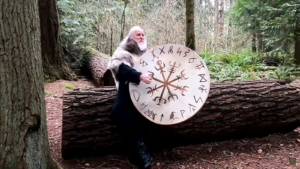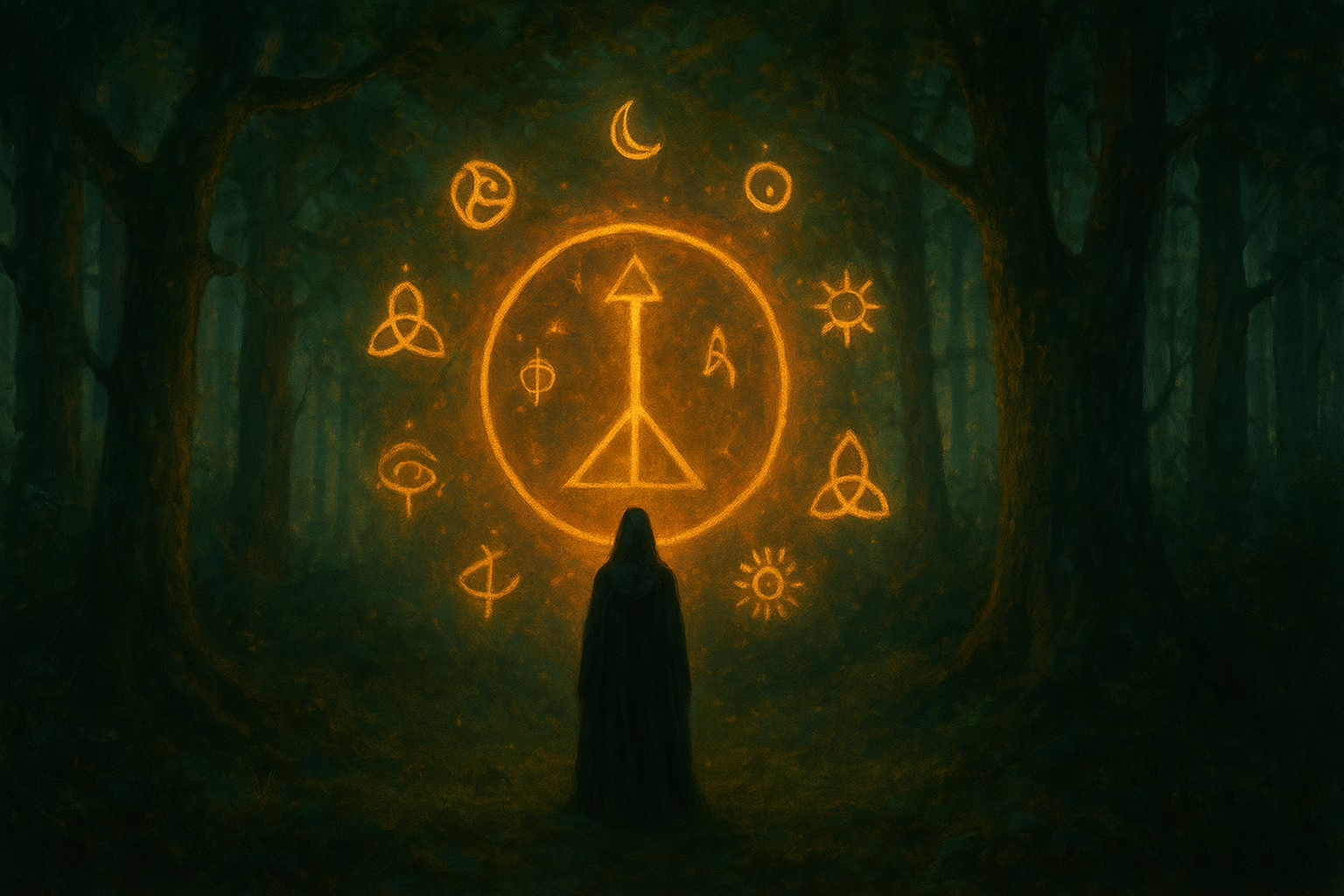Table of Contents
Beneath the surface of ordinary awareness lies a vast, unseen ocean that is a realm where memory, myth, and dream converge. This is the domain of the collective unconscious, a term coined by the psychologist Carl Gustav Jung to describe the shared psychic inheritance of humanity. Unlike the personal unconscious, which holds forgotten or repressed experiences unique to the individual, the collective unconscious is universal, ancient, and profoundly alive. It contains archetypes: primordial images and motifs that have echoed across cultures, civilizations, and ages. These archetypes are the silent architects of myth, ritual, and spiritual experience, shaping not only our dreams but the very way we perceive reality.
Paganism and the Collective Unconscious
For contemporary Pagans, the notion of the collective unconscious can inform our practice as we delve into mystical realms. When we call upon deities, spirits, or sacred Ancestors, we are often tapping into energies that transcend personal history. These figures, gods, goddesses, fae, and spirits, exist not only in mythology but within the psychic fabric of humanity itself. Their stories, passed down through generations, are manifestations of archetypal energy, which is nourished by the human imagination and ritual practice. In time, they become egregores. In honoring these presences, we participate in a living dialogue with the collective psyche, breathing vitality into symbols that might otherwise remain dormant.
The Red Book
Jung’s exploration of these depths reached a luminous and unsettling apex in his Red Book, a manuscript of visions, dreams, and active imagination that he kept largely private during his lifetime. Within its illuminated pages, Jung recorded encounters with figures both terrifying and sublime, engaging directly with the unconscious in a form of sacred, personal, and almost Pagan ritual. The Red Book is significant because it reveals that the collective unconscious is not merely theoretical; it is experiential. Jung entered into conversation with its archetypal forms, and in doing so, he demonstrated that the psyche is alive, interactive, and often astonishingly autonomous. For modern Pagans, this is a mirror of ritual practice itself: when we invoke a deity, perform a chant, or meditate on ancestral energies, we are engaging with archetypal currents that flow through the collective unconscious.
Contemporary Paganism and the Collective Unconscious
Contemporary Paganism, with its emphasis on cycles, nature, and sacred narrative, provides fertile ground for these archetypal energies. Seasonal festivals, lunar rituals, and meditative journeys are bridges to the collective unconscious. When a circle of practitioners calls to the Horned God at Samhain, or to the Triple Goddess at Esbats, they are participating in a timeless chorus, an echo of what Jung might describe as the universal mind. These rituals awaken latent patterns within the psyche, connecting the individual to a shared spiritual heritage.
The collective unconscious also explains the resonance of myth across cultures. Gods and goddesses may bear different names and forms, yet their essence in their archetypal functions such as the Trickster, the Mother, the Warrior, the Sage, remains strikingly similar. This universality underlines a deeper truth: the divine is not merely “out there” in the world but also “in here,” within the depths of our shared psyche. This is often reflected in the phrase, “As above, so below.” Contemporary Paganism, by invoking these archetypes, allows practitioners to experience the sacred as a living, breathing presence, accessible in both ritual and meditation.
An Invitation to Personal Experience of Unity
Ultimately, engaging with the collective unconscious is an invitation. It is an invitation to explore shadow and light, to honor ancestors and gods, and to recognize the deep, connective tissue that binds all human experience. Through ritual, music, meditation, and reflection, the invisible currents of archetypal energy can be felt, guiding us toward insight, transformation, and connection. Jung’s Red Book reminds us that these currents are not abstract; they are alive, demanding acknowledgment, dialogue, and reverence. As contemporary Pagans, we walk with these currents daily, co-creating a living mythology that stretches from the dawn of humanity into the luminous potential of today.
In the dance between self and archetype, nature and spirit, we find ourselves entwined with the collective unconscious, a boundless reservoir of memory, myth, and magic. By listening, honoring, and participating, we awaken not only the divine in the world but the divinity within ourselves.
Subscribe to Sencha Skene

Discover mystical music, guided meditations, and nature-inspired rituals. Explore ancestral energy, Pagan wisdom, and magical storytelling. Join a reflective, spiritual community and experience new albums, performances, and creative journeys. Visit Sencha Skene’s YouTube channel for latest news, music, videos, and more! Click on the button below!
Receive Sencha’s insights into the mystical realm, nature-inspired reflections, updates on new music, albums, and live performances. Connect with ancestral energy, Pagan wisdom, and a reflective, spiritual community. Stay inspired and in the flow of magic. Subscribe to Sencha Skene’s newsletter using the button below!
